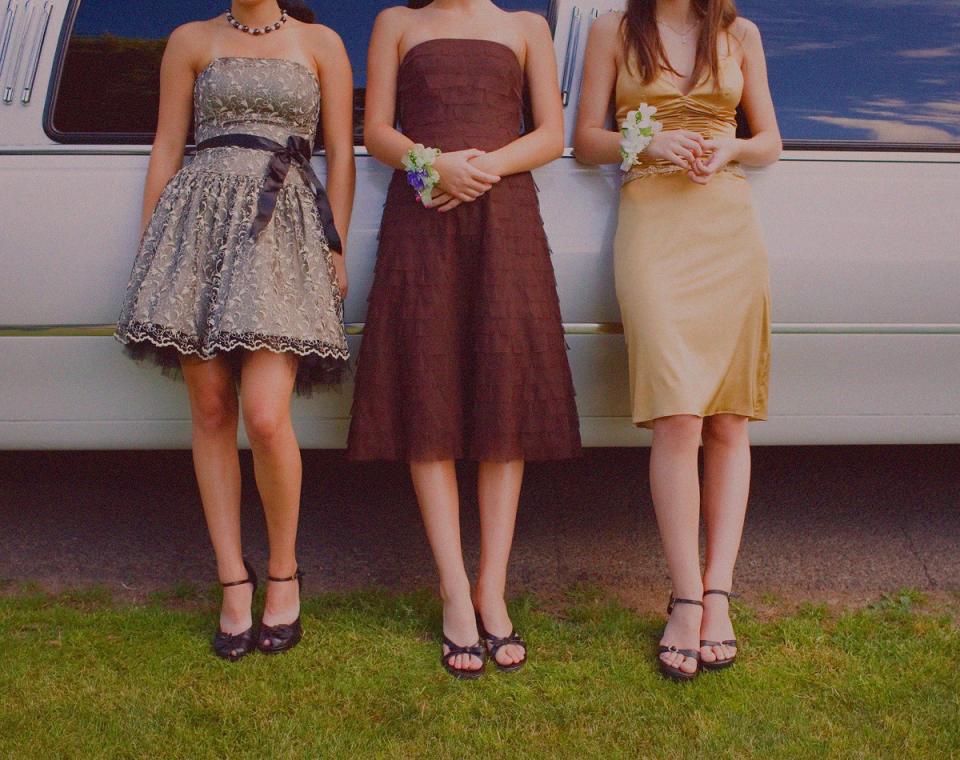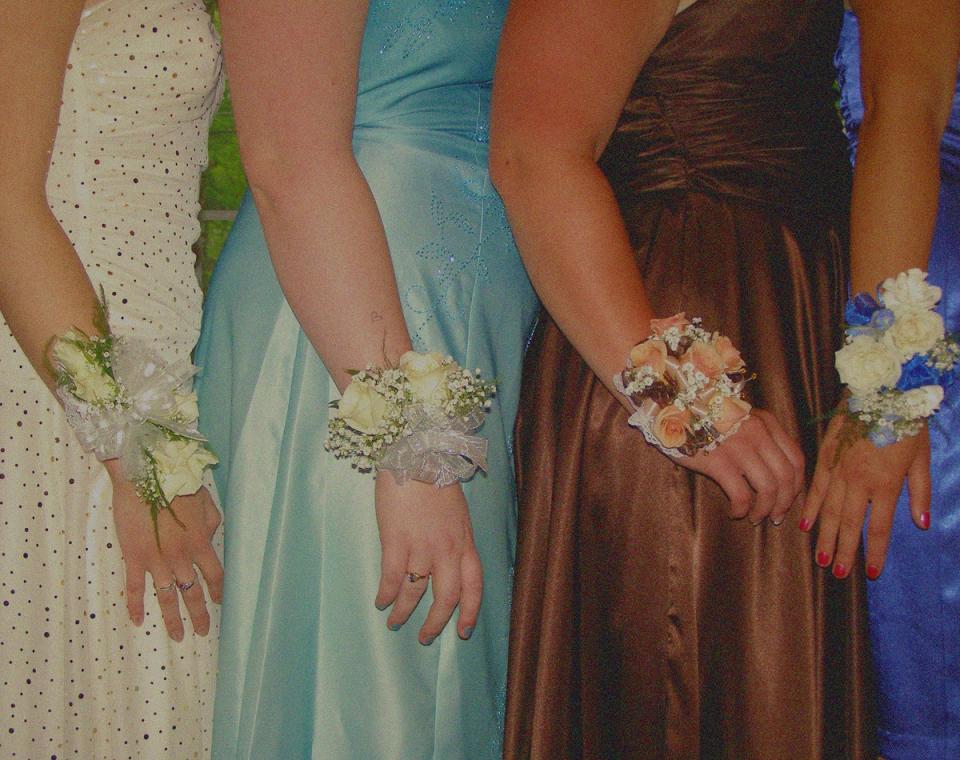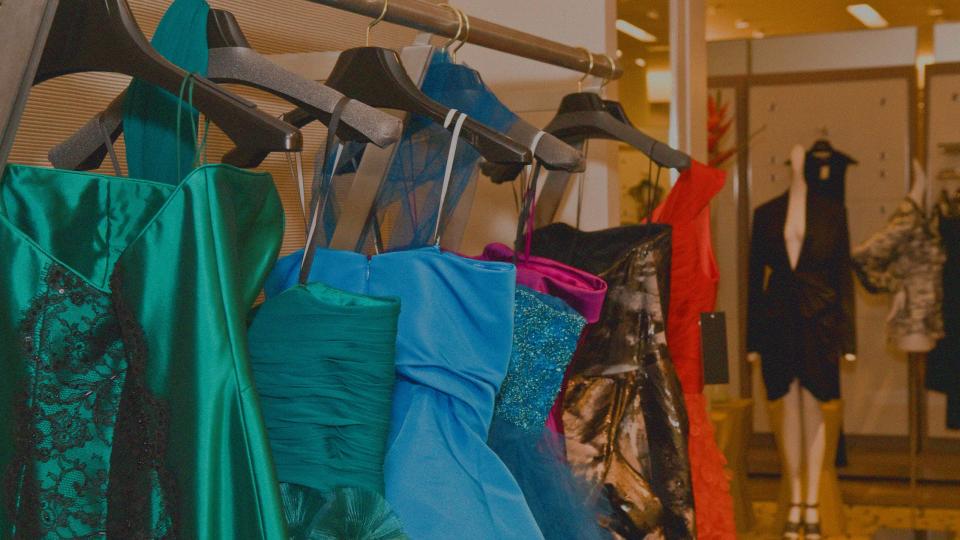I Never Realized I Was Different—Until I Had to Buy a Plus-Size Prom Dress
One of the most transformative experiences of my life was going shopping for a prom dress. My friends and I had been looking forward to this shopping excursion for months and decided we’d make it a big trip, pick out each other’s outfits.
I knew exactly how I wanted to look: Audrey Hepburn meets 10 Things I Hate About You. My prom dress would be classic, floor length, black—it would fit like a glove—and I'd wear it with glamorous hair and a red lip. (And actual gloves, of course.)
We went to the first department store at our local mall and immediately snatched up everything we could find. Sequins, silk, tulle, lace, long dresses, short dresses—the best of early 2000s teen fashion. Giddy with possibility, we headed toward the dressing rooms.
I put on the first dress—a satin, A-line style with spaghetti straps. The back wouldn’t zip.
I tried the second one—a strapless ballgown with visible boning, a straight neckline, and a tulle skirt. The lace-up back wouldn’t even come close to closing.
I grabbed the next one. I couldn't even get it up over my thighs.
I looked at myself in the mirror, my dreams of the perfect prom dress fading with every ill-fitting piece. My throat got tight. I couldn’t just back out and get a bigger size—I had already picked out the biggest size available for each gown. The tears started welling up as my friends called to me from outside the dressing room, asking me to come out and show them my favorites. It was humiliating.

I tried to compose myself. From behind my door, I told them that I didn’t really like any of the options, that this store wasn’t really my style. I’d look for something else later.
I insisted they stay and finish up. I’d meet up with them after.
I always knew I was bigger than my friends. I just never realized how much that would define my shopping experience. I had never felt truly isolated by my size until it came time to buy a prom dress.
As my friends kept browsing the Juniors section, I snuck up two flights of stairs and toward the back of the department store. Next to the bathroom, tucked away in a corner, I found the plus-size clothes—the only clothes I knew for sure would fit me. I was hidden from everyone, and in that moment I was honestly grateful for it. I didn’t want to be seen there.
In the safety of the plus-size section, I started looking through the options available in my size. Well, they were sparse—a long-sleeve polyester pants set, sacklike gowns with matching cardigans, taffeta separates that looked better suited for sleeping than for a high school prom. Nothing came close to the fitted, dramatic pieces I’d seen in downstairs, where my friends were. My "Audrey meets 10 Things" dream was nowhere to be found.
Standing there among those clothes, the impression I got was that I wore a size normally reserved for women 50 years my senior—that somehow, the minute I crossed the invisible threshold into plus, my interest in age-appropriate fashion should have evaporated. Suddenly I became much more aware of how differently the world saw me from how I saw myself. And it didn’t take long for me to start noticing that everywhere.

There were no girls that looked like me in movies. I didn’t see a model over a size 4 in any of the teen magazines I consumed voraciously. Researchers call this symbolic annihilation, the idea that if you don’t see yourself represented in the media you consume, you must somehow be irrelevant or unworthy. I can list more werewolves featured in TV shows set in high school than I can plus-size female protagonists—even fewer if I'm looking for characters that aren’t treated as a punchline. (“Fat Monica” on Friends? “Hefty Hanna” on Pretty Little Liars? That’s a pass.) It’s no wonder prom dress designers hadn’t thought to create something for me. The whole world acted as though I didn’t exist.
So what can be done?
First, let’s recognize a few truths. Of course plus-size teens exist. They go to high school. They go to prom. Let’s see them on TV—the more they appear on screen, the more plus-size girls and women will be considered by designers, by our peers, by those in power. We’ve made some progress thanks to shows like Shrill and movies like Booksmart. But let’s double down.
Second, fewer long-sleeve polyester pants sets in the plus-size formalwear section. (Do I even have to say this?)
Ultimately, that one bad shopping experience didn’t hold me back. I graduated at the top of my class, went to college, had great friends and (sometimes) great boyfriends. Eventually I saw my dream of transforming plus-size fashion begin to come to life in Dia&Co, the company I would go on to found years later.

Oh, and in case you were wondering: I ended up designing my own size-20 prom dress. And it looked awesome.
Nadia Boujarwah is the cofounder and CEO of the plus-size retail styling service Dia&Co.
Originally Appeared on Glamour


